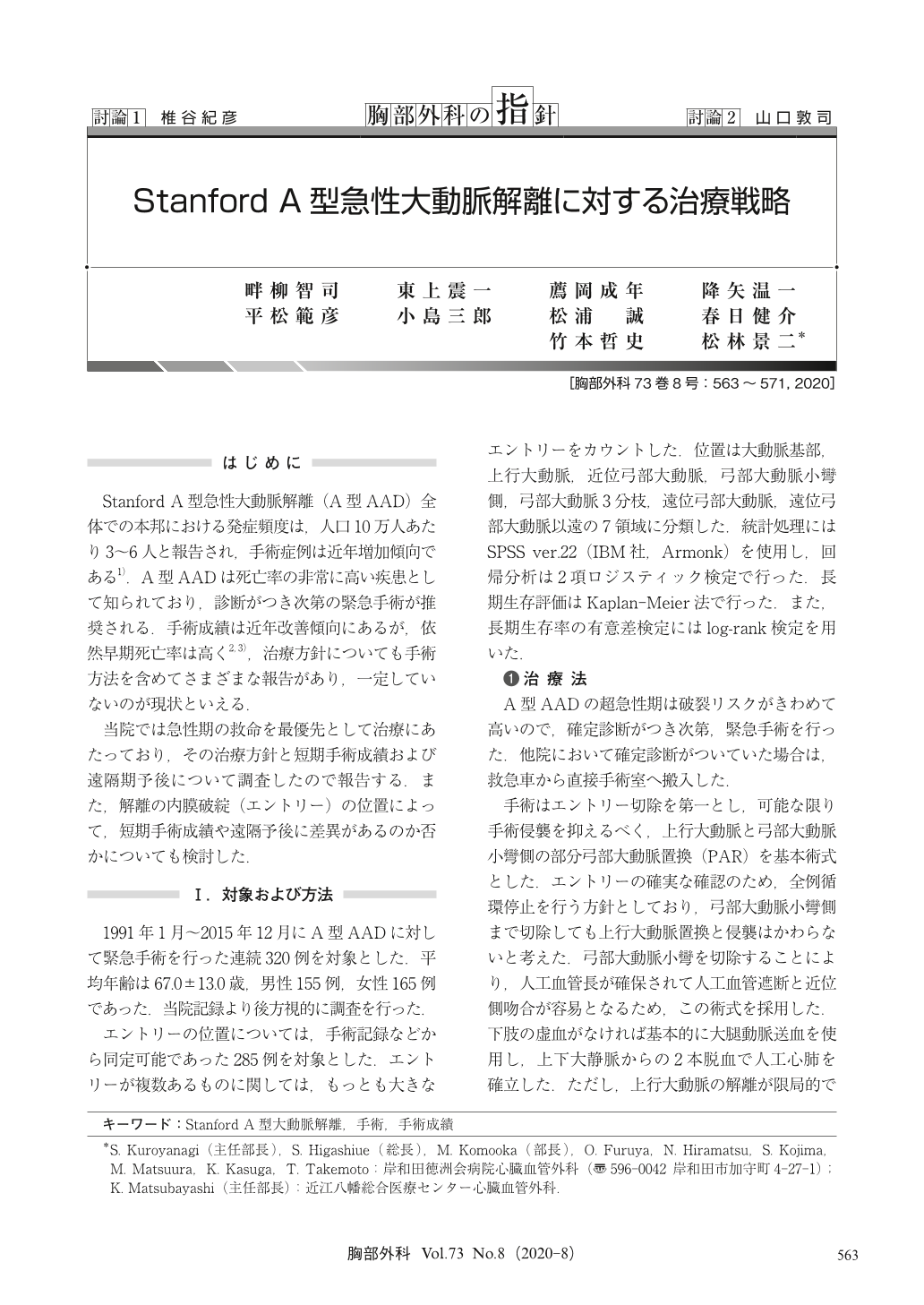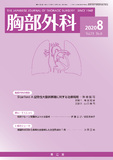Japanese
English
- 有料閲覧
- Abstract 文献概要
- 1ページ目 Look Inside
- 参考文献 Reference
Stanford A型急性大動脈解離(A型AAD)全体での本邦における発症頻度は,人口10万人あたり3~6人と報告され,手術症例は近年増加傾向である1).A型AADは死亡率の非常に高い疾患として知られており,診断がつき次第の緊急手術が推奨される.手術成績は近年改善傾向にあるが,依然早期死亡率は高く2,3),治療方針についても手術方法を含めてさまざまな報告があり,一定していないのが現状といえる.
The fundamental treatment of Stanford type A acute aortic dissection is a lifesaving emergency surgery in our hospital. We perform hemiarch replacement with a focus on entry tear, but an extended surgery is also performed only when resection of the entry tear is difficult. The outcomes of current therapeutic policy, along with the short-term and the long-term outcomes of different sites of entry tear, were examined retrospectively.
Three hundred and twenty surgery of Stanford type A acute aortic dissection were performed between 1991 and 2015 at our hospital. Their short-term and long-term outcomes were examined after dividing them into 7 groups according to their entry sites. We also investigated surgical methods and effects of presence/absence of residual entry tear.
As a result, overall hospital mortality was 13.1%. There was no significant difference in either short-term or long-term outcome among the groups. Likewise, no significant difference was observed in the surgical methods or the presence/absence of residual entry tear.
Recently, minimally invasive procedures, such as stent-grafting, have been applied to manage the residual entry tear. Therefore, an aggressive extended surgery is no longer inevitable and our current therapeutic policy is considered reasonable.

© Nankodo Co., Ltd., 2020


